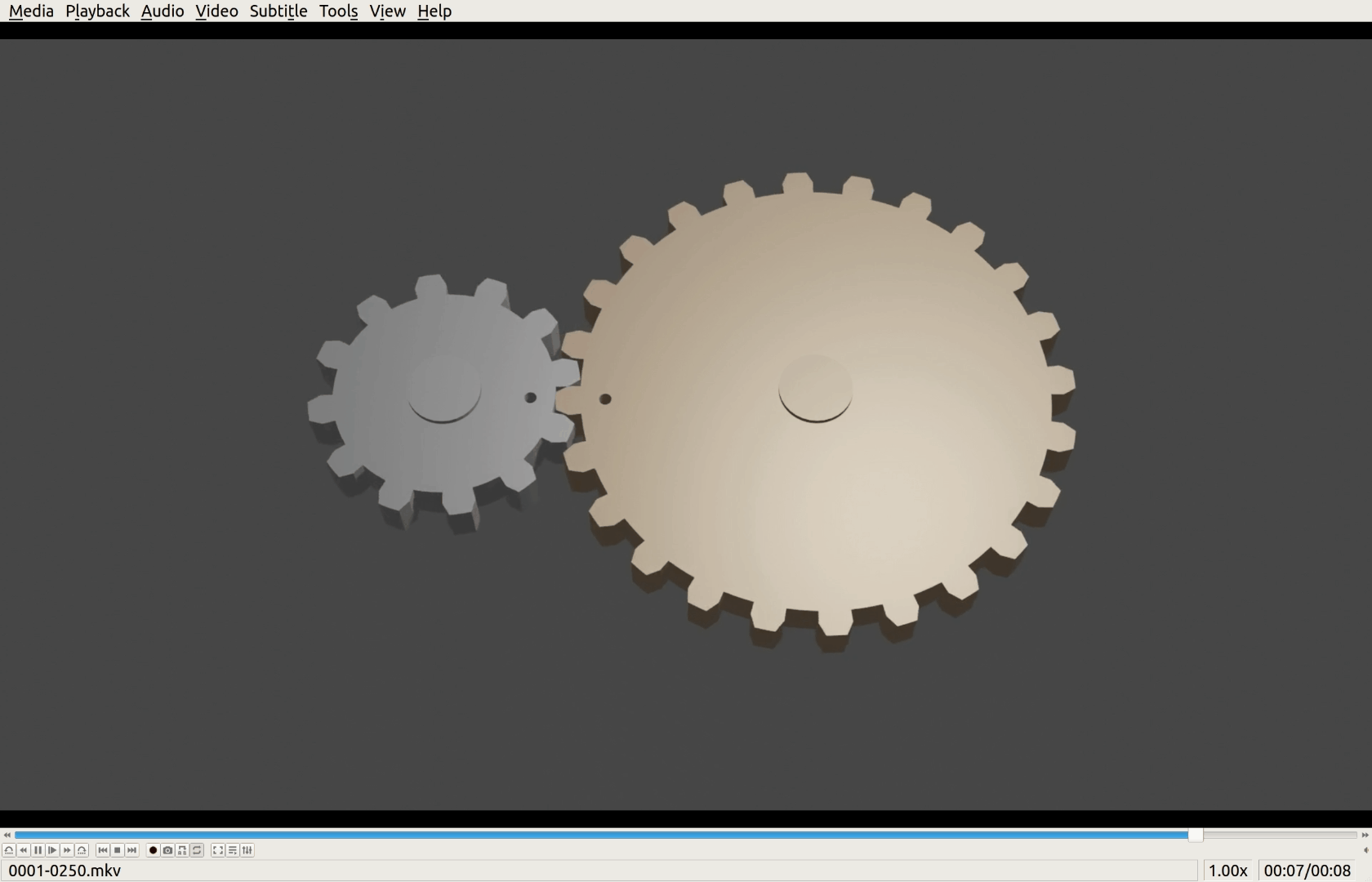Gears are simple machines used to transmit Torque in a compact size. There are various types of gears, but most gears simply consist of a metal disc with teeth (spurs) and a hole for an axle to pass through.
As mentioned, gears are used to transfer torque (and therefore, force) over distances, or even directions. Gears have many advantages and disadvantages:
- Can transmit very high torque (via , as teeth in the gears ensure that no torque is lost due to slipping.
- Can achieve large speed or torque increases or reductions in a compact size
- However, they do have a high production cost, as most gears are made of metal for durability.
- Gears also require lubrication to prevent damage via constant friction between the teeth
- The compactness also comes at a disadvantage, since gears need to constantly be in contact with each other, and hence are inefficient over long distances.
MA & VR
In gears, a more useful concept is the idea of gear ratios, which are the ratio of the teeth or rpm of gears.
A good estimation for gear ratios is as follows: Larger gears always move slower. Therefore, if a small(er) gear is a driver gear, then the gear ratio is greater than 1.
Deriving the formula
Let’s start by recalling the formula for Velocity Ratios: . Basically, VR is the ratios of the speeds of 2 different components. Now imagine we have 2 gears, one with 12 teeth and one with 24 teeth, attached to each other, as such:

and since rpm (rotations per minute) is a measure of speed, we can use RPMs as velocity ratios:
Gear Type
Gears are classified based on their shape and size, each type having it’s own advantages and disadvantages.
Gear Trains
When multiple gears are used in a single system, the combination of gears is referred to as a gear train. Gear trains consists of three or more interconnected idler gears.
A gear train consists of three parts:
- Driver Gear: Same as a normal gear system, this is the gear that is considered the effort.
- Driven Gear: Same as a normal gear system, this is the gear that is considered the force.
- Idler Gears: Any gear that is neither effort nor load can be thought of as idler gears. Idler gear do not affect gear ratios, i.e. velocity ratio of a system.
Another thing of note is that in gear trains, the number of gears affect the direction of rotation:
- If the number of gears in a gear train is even, then the driven gear moves in the opposite direction as the driver gear (i.e. if gear A moves clockwise, gear B moves anticlockwise).
- If the number of gears in a gear train is odd, then the driven gear moves in the same direction as the driver gear (i.e. if gear A moves clockwise, gear C moves clockwise).
Compound Gears
If multiple gears are connected to the same axle/shaft, they can be thought of as compound gears. All the gears that share the same axle also share the same rotational velocity. The use of compound gears can be to reduce the size of the gearbox, as well as potentially reduce cost. Net gear ratio = Product of gear ratios